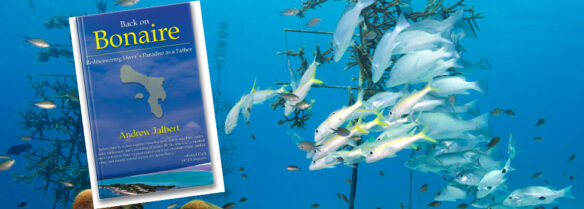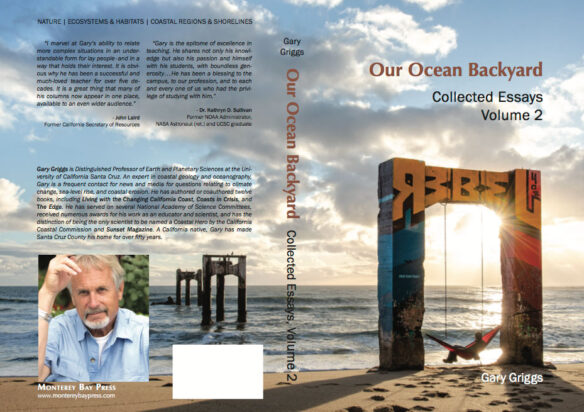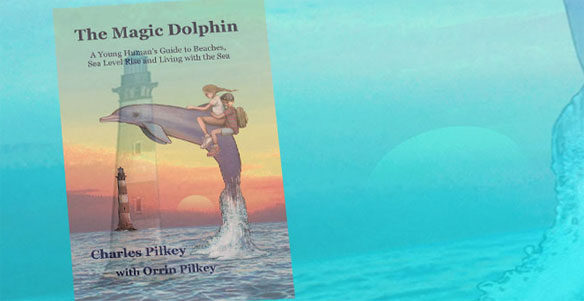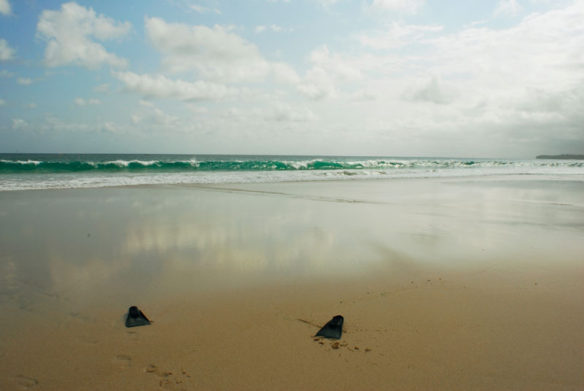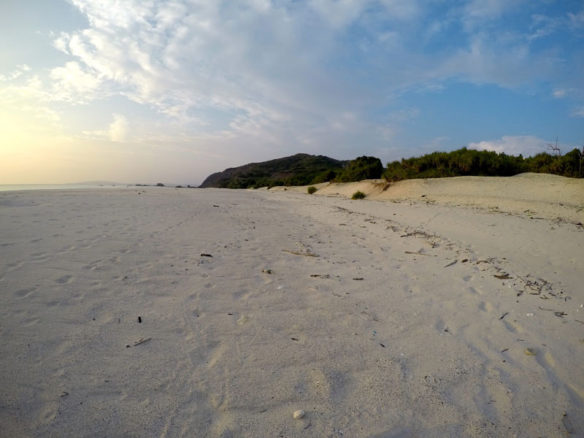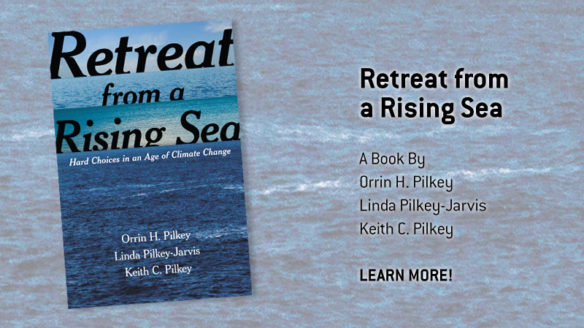Coastal Scenery:
Evaluation and Management
Editor: ©Nelson Rangel-Buitrago, Departamentos de Física y Biologia, Universidad del Atlantico, Barranquilla; Atlantico, Colombia
Contributors:
Giorgio Anfuso,
Department of Earth Sciences, Faculty of Marine and Environmental Sciences, University of Cadiz Spain
Ayes Ergin, Department of Civil Engineering, Coastal Engineering Division, Middle East Technical University, Ankara, Turkey
Anton Micallef, Euro-Mediterranean Centre on Insular Coastal Dynamics, Institute of Earth Systems, University of Malta, Msida, Malta
Enzo Pranzini, Department of Earth Sciences, University of Florence, Florence, Italy
Allan T. williams, Faculty of Architecture, Computing and Engineering, University of Wales, Swansea, Wales, UK
CICA NOVA, Nova Universitad de Lisboa, Lisbon Portugal
Published by Springer
Coastal Scenery Evaluation and Management, describes an easy to apply methodology to determine the scenic value of a coast. As one of the most critical aspects of beach user choice, the determination of coastal area scenic quality is of primordial importance. This book is, therefore, an extremely useful tool for any coastal lovers, being them users, teachers, researchers, or managers.
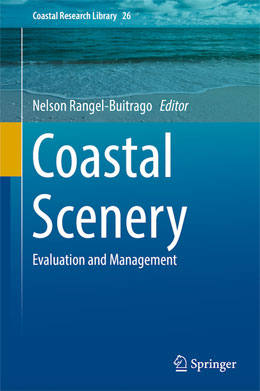
In particular, this work is the first book to present a semi-quantitative analysis of coastal scenery based on more than 4,000 interviews about people’s desired coastal imaginary. Twenty-six parameters can be used to identify any coastal scene, which have then been sub-divided into five attribute categories, weighted and subjected to fuzzy logic mathematics to obtain a decision number (D). This number D represents the coastal scenery at that point, and Five D classes are then presented (from I-excellent, to V-poor). Heritage areas, like National Parks should lie in Class I, which infers top scenic quality.
Over a time span of a decade or so, the authors of this book have assessed more than 900 global locations using the technique given in this book. One of the main aims of this method is to point out how scenic areas may be improved by judicious intervention relating to parameters, mainly anthropogenic, chosen for assessment.
The content of this book opens perspectives for analysis of the potential for coastal tourism development in natural areas and for landscape quality improvement in current coastal tourist developed areas.
“In a very comprehensive way, this book reviews the main concepts about coastal scenery and through the vast global work experience of the authors, presents different methodologies, as well as introducing a novel methodology, using parameter weightings and fuzzy logic mathematics.”
Carlos Pereira da Silva, CICS.NOVA, Universidade Nova de Lisboa, Lisbon, Portugal
“Our lives will be greatly enriched by finding beauty, but we can use help in defining the many ways beauty can be manifested. This book can help us by informing us of the ways landscapes can be viewed and described from many viewpoints to place our own understanding in better perspective.”
Karl Nordstrom, Geography Department, Rutgers University, New Jersey, USA
“How do we define and quantify a coast’s scenic value? This is the book. It begins by defining coastal scenery, then reviews the approaches to quantifying it, followed by a new fuzzy logic approach and examples. It finishes with a chapter on how to manage these attractive landscapes, many of which are being overrun and ruined by development. This is a must read for researchers who wish to evaluate and managers who wish to maintain this valuable yet intangible coastal resource.”
Andrew Short, Coastal Studies Unit, Sydney University, Australia
About the Author
Nelson Rangel is a Full Professor of Geology at the University of Atlantico, Barranquilla, Colombia. He has been teaching at the university level since 2003. In addition to his teaching experience, he has conducted many research projects on geology, anthropic geomorphology, and oceanography and has served as an expert consultant for national and international organisations, mostly in Spain and Colombia. Dr. Rangel has published more than 40 articles in international journals and has edited or authored 25 books.
In Preview:
Chapter 1
Coastal Scenery: An Introduction
Copyright © 2018 – Nelson Rangel-Buitrago
Nelson Rangel-Buitrago, Allan T. Williams, Aysen Ergin, Giorgio Anfuso, Anton Micallef and Enzo Pranzini
“Mir hilft der Geist; auf einmal she’ich Rat.
Und schreibe getrost. Im Anfang war die Tat.”
Goethe, Faust Part 1, lines 1236-7
Abstract
Coastal tourism includes those recreational activities which involve travel away from one’s place of residence which has as their host or focus the coastal zone. This industry necessarily depends on the coastal environment to attract tourists. Excellent scenery is maybe the prime factor considered by a potential tourist when is time to choose a coastal vacation destination. Coastal scenery management, a controlled tourism growth, an enhancing of the product, the constant upgrading of the quality of offer and service, as well a diversified clientele, can be considered as critical points for an ideal tourism development that will satisfy both visitors and those whose livelihood depends on it.
Introduction
It is so small a thing to have enjoyed the sun. Matthew Arnald, Empedocles on Etna, 1, ii, 397
Coasts are the most dynamic and valued geomorphological features on the surface of the earth (Pilkey and Cooper 2014). They serve as home to a multitude of living organisms, including humans and are in continuous change due to a large variety of processes. From ancient times, coasts have played a significant role as a place for human settlement and economic development (Barragan and Andreis 2015).
“The coastline is of special importance” (Steers 1944, 5), however is a very fragile environment easily affected by disordered infrastructures emplacement and activities, such as, industry, tourism,, agriculture and fishing, amongst others.
During past years, there has been overdevelopment of many of these areas due to unbridled pursuit for further economic benefits. This had led an increase in environmental impacts due to processes that includes, amongst others, sand mining (Rangel-Buitrago et al. 2015a,b) beach pollution (Williams et al. 2013), and coastal armoring (Pranzini and Williams 2013).
The invaluable significance of coastal landscapes to society has long been recognized and is reflected by the plethora of existing protection status areas, such as, National Parks, Heritage Coasts, Wilderness Areas, Protected Landscapes and Areas of Outstanding Natural Beauty. However, despite the existence of these entities whose designations are strongly influenced by scenic beauty, scenic degradation globally greatly affects many coasts.
In the last few decades, the number of people able to visit coastal zones for recreational purposes has increased exponentially and correspondingly a popular desire to protect and conserve beautiful scenery has also risen over this period (UNEP 2009; Miller et al 2010; UNWTO 2016). Frequently, coastal stakeholders and decision makers have been faced with a complicated question: Should landscape development be impaired for the sake of conserving the natural scenery, or vice versa? This can only be answered by determining what landscapes are favored by society as a who;e and this requires evaluation of the relative quality of coastal scenery by Governments in order that it can be compared to those of other landscapes and to the needs of other resource users. After all,
“coastal scenery is a resource, partly because of the economic value and partly because it is an accepted component of resource assessment programs” (Kaye and Alder 1999, 303-304). Evaluation of a coastal landscape is important as it provides measurement, description, and classification schemes (Dakin 2003; Ergin et al.2004; Rangel-Buitrago et al.2013), giving means by which scenery/amenities can be compared against other resource considerations (Ergin et al. 2006). It is a visual expression of the coast, and is a great resource that has not been analyzed in detail on any scientific basis.
In addition, it can improve resource inventories, carrying capacity decision making, and can be included into Environmental Impact Assessments (region et al. 2004). Coastal scenic evaluations allow managers to determine the relative attractiveness of locations so that informed decisions concerning improvements to the scenic quality of the landscape and their management may be made.
While this applies to all landscapes, it is of particular importance to coastal scenery. Worldwide coastal scenery problems are further amplified by a tourist industry that is struggling to fill gaps left in the world economy by the decline of heavy industry and a rise in general affluence (Williams and Ergin 2004). The coastal tourist industry mainly depends on beaches to attract tourists (Botterill et al. 2000; White et al. 2010) and many diverse studies have shown that excellent coastal scenery is one of the major factors considered by tourists when choosing a beach vacation (Miller 1993; Unal and Williams 1999; Jedrzejczak 2004; Williams and al. 2016).
Scenery may be defined as
“the appearance of an area” (Council of Europe 2000) and is a part of a coastal landscape inventory available for different coastal disciplines, such as, geography, geology, planning, etc. Likewise, coastal landscapes can be described as a littoral area, as perceived by humans, whose character results from the multiple interactions between natural and/or human factors (Council of Europe 2000).
Inside this book the reader can find an exhaustive review of existing scenery evaluation techniques, and can also obtain a novel methodology for coastal landscape evaluation, the Coastal Scenic Evaluation System (CSES) presented in Chap.4, which is applied and presented by worldwide cases studies. However, it is salutary to note the words written over 70 years ago by a world leading coastal geographer that
“any assessment of coastal scenery is likely to meet with criticism” (Steers 1944, 6). A series of recommendations is also given for adequate coastal scenery management.
Over a time span of a decade or so, the authors of this book have assessed more than 952 global locations by the technique given in Chaps.4 and 5. Coastal/beach management, mainly driven by the tourist industry and appropriate government policies (designation of National Parks, Areas of Outstanding Natural Beauty, amongst others) has improved immensely and therefore the figures given here for coastal scenery may not represent the current situation. We urge readers to visit place mentioned in this bool and assess their scenic value in order to realize an up to date figure for that particular location. One of the aims of the technique is to point out how scenic areas may be improved by judicious intervention relating to parameters, mainly anthropogenic, chosen for assessment.
The content of this book aims to open perspectives for analysis of the potential for coastal tourism development in natural areas and for scenic quality improvement in current coastal tourist developed areas. It will be a helpful tool for coastal lovers that include users, teachers, researchers, and managers.
 In particular, this work is the first book to present a semi-quantitative analysis of coastal scenery based on more than 4,000 interviews about people’s desired coastal imaginary. Twenty-six parameters can be used to identify any coastal scene, which have then been sub-divided into five attribute categories, weighted and subjected to fuzzy logic mathematics to obtain a decision number (D). This number D represents the coastal scenery at that point, and Five D classes are then presented (from I-excellent, to V-poor). Heritage areas, like National Parks should lie in Class I, which infers top scenic quality.
Over a time span of a decade or so, the authors of this book have assessed more than 900 global locations using the technique given in this book. One of the main aims of this method is to point out how scenic areas may be improved by judicious intervention relating to parameters, mainly anthropogenic, chosen for assessment.
The content of this book opens perspectives for analysis of the potential for coastal tourism development in natural areas and for landscape quality improvement in current coastal tourist developed areas.
“In a very comprehensive way, this book reviews the main concepts about coastal scenery and through the vast global work experience of the authors, presents different methodologies, as well as introducing a novel methodology, using parameter weightings and fuzzy logic mathematics.”
Carlos Pereira da Silva, CICS.NOVA, Universidade Nova de Lisboa, Lisbon, Portugal
“Our lives will be greatly enriched by finding beauty, but we can use help in defining the many ways beauty can be manifested. This book can help us by informing us of the ways landscapes can be viewed and described from many viewpoints to place our own understanding in better perspective.”
Karl Nordstrom, Geography Department, Rutgers University, New Jersey, USA
“How do we define and quantify a coast’s scenic value? This is the book. It begins by defining coastal scenery, then reviews the approaches to quantifying it, followed by a new fuzzy logic approach and examples. It finishes with a chapter on how to manage these attractive landscapes, many of which are being overrun and ruined by development. This is a must read for researchers who wish to evaluate and managers who wish to maintain this valuable yet intangible coastal resource.”
Andrew Short, Coastal Studies Unit, Sydney University, Australia
In particular, this work is the first book to present a semi-quantitative analysis of coastal scenery based on more than 4,000 interviews about people’s desired coastal imaginary. Twenty-six parameters can be used to identify any coastal scene, which have then been sub-divided into five attribute categories, weighted and subjected to fuzzy logic mathematics to obtain a decision number (D). This number D represents the coastal scenery at that point, and Five D classes are then presented (from I-excellent, to V-poor). Heritage areas, like National Parks should lie in Class I, which infers top scenic quality.
Over a time span of a decade or so, the authors of this book have assessed more than 900 global locations using the technique given in this book. One of the main aims of this method is to point out how scenic areas may be improved by judicious intervention relating to parameters, mainly anthropogenic, chosen for assessment.
The content of this book opens perspectives for analysis of the potential for coastal tourism development in natural areas and for landscape quality improvement in current coastal tourist developed areas.
“In a very comprehensive way, this book reviews the main concepts about coastal scenery and through the vast global work experience of the authors, presents different methodologies, as well as introducing a novel methodology, using parameter weightings and fuzzy logic mathematics.”
Carlos Pereira da Silva, CICS.NOVA, Universidade Nova de Lisboa, Lisbon, Portugal
“Our lives will be greatly enriched by finding beauty, but we can use help in defining the many ways beauty can be manifested. This book can help us by informing us of the ways landscapes can be viewed and described from many viewpoints to place our own understanding in better perspective.”
Karl Nordstrom, Geography Department, Rutgers University, New Jersey, USA
“How do we define and quantify a coast’s scenic value? This is the book. It begins by defining coastal scenery, then reviews the approaches to quantifying it, followed by a new fuzzy logic approach and examples. It finishes with a chapter on how to manage these attractive landscapes, many of which are being overrun and ruined by development. This is a must read for researchers who wish to evaluate and managers who wish to maintain this valuable yet intangible coastal resource.”
Andrew Short, Coastal Studies Unit, Sydney University, Australia

